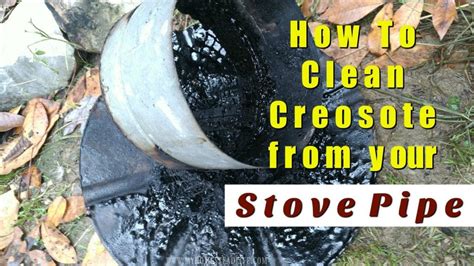Creosote Danger: How Often to Clean Your Wood Stove Pipe
Creosote buildup in your wood stove pipe is a serious fire hazard. Understanding the dangers of creosote and establishing a regular cleaning schedule is crucial for maintaining a safe and efficient heating system. This comprehensive guide will explore the risks, factors influencing cleaning frequency, and best practices for keeping your chimney and stovepipe safe.
What is Creosote and Why is it Dangerous?
Creosote is a highly flammable byproduct of burning wood. It's a tar-like substance that forms when wood smoke condenses inside your chimney and stovepipe. The more incomplete the combustion process (due to factors discussed below), the more creosote is produced. A significant buildup of creosote creates a highly combustible lining within your chimney, dramatically increasing the risk of a chimney fire. These fires can spread rapidly, causing extensive damage to your home and posing a serious threat to life and property.
How Often Should I Clean My Wood Stove Pipe?
There's no single answer to how often you should clean your wood stove pipe. The frequency depends on several factors:
Factors Influencing Cleaning Frequency:
- Type of Wood: Softwoods like pine and fir produce more creosote than hardwoods like oak and maple. Burning softwoods requires more frequent cleaning.
- Burning Practices: Proper burning techniques are crucial. Using seasoned wood with low moisture content and maintaining a hot, clean burn minimizes creosote formation. Small, inefficient fires produce more creosote than large, hot fires.
- Wood Stove Type: Different wood stoves burn differently and may produce varying amounts of creosote.
- Amount of Use: The more frequently you use your wood stove, the faster creosote builds up. Daily users will need more frequent cleanings than those who use their stove only occasionally.
General Guidelines:
While specific frequency depends on the above factors, here are general guidelines:
- Regular Inspections: Inspect your chimney and stovepipe at least once a month, ideally with a flashlight or inspection camera, to check for creosote buildup.
- 1/8" Buildup: If you see a creosote buildup of 1/8 inch or less, you can probably wait a bit longer before cleaning.
- 1/4" Buildup: A 1/4-inch layer requires immediate attention and professional cleaning.
- Glazed Creosote: This hard, glassy creosote is particularly dangerous and indicates a need for immediate professional cleaning.
Most experts recommend a minimum of one cleaning per heating season, even with seemingly low creosote buildup. It's better to be safe than sorry.
How to Tell if You Need to Clean Your Chimney:
Beyond visual inspection, there are other signs indicating a need for chimney cleaning:
- Excessive Smoke: More smoke than usual escaping from your chimney or stovepipe could indicate a blockage from creosote.
- Sooting: Noticeable soot buildup on the stovetop, walls, or furniture around the stove.
- Slow Draft: A reduced draft, meaning less efficient burning, could be due to creosote restricting airflow.
- Burning Smell: A persistent burning or acrid smell emanating from the chimney or stove.
What Happens if I Don't Clean My Wood Stove Pipe Regularly?
Neglecting regular cleaning can lead to:
- Chimney Fires: The most significant risk, potentially causing extensive property damage and endangering lives.
- Carbon Monoxide Poisoning: Incomplete combustion due to creosote buildup can lead to dangerous levels of carbon monoxide in your home.
- Reduced Efficiency: Creosote buildup restricts airflow, making your stove less efficient and requiring more wood to heat your home.
- Damage to the Chimney: Excessive creosote can cause corrosion and damage to the chimney structure.
Can I Clean My Wood Stove Pipe Myself?
While some people attempt DIY cleaning, it's generally recommended to hire a certified chimney sweep. Cleaning a chimney is a potentially dangerous task requiring specialized equipment and knowledge. Improper cleaning can worsen the problem or cause injury.
What are the Costs Involved in Chimney Cleaning?
Costs vary widely based on location, chimney type, and access. It's best to get quotes from several certified chimney sweeps in your area.
By prioritizing regular inspection and cleaning, you significantly reduce the risk of creosote-related fires and maintain a safe and efficient heating system. Remember, safety should always be your top priority.

